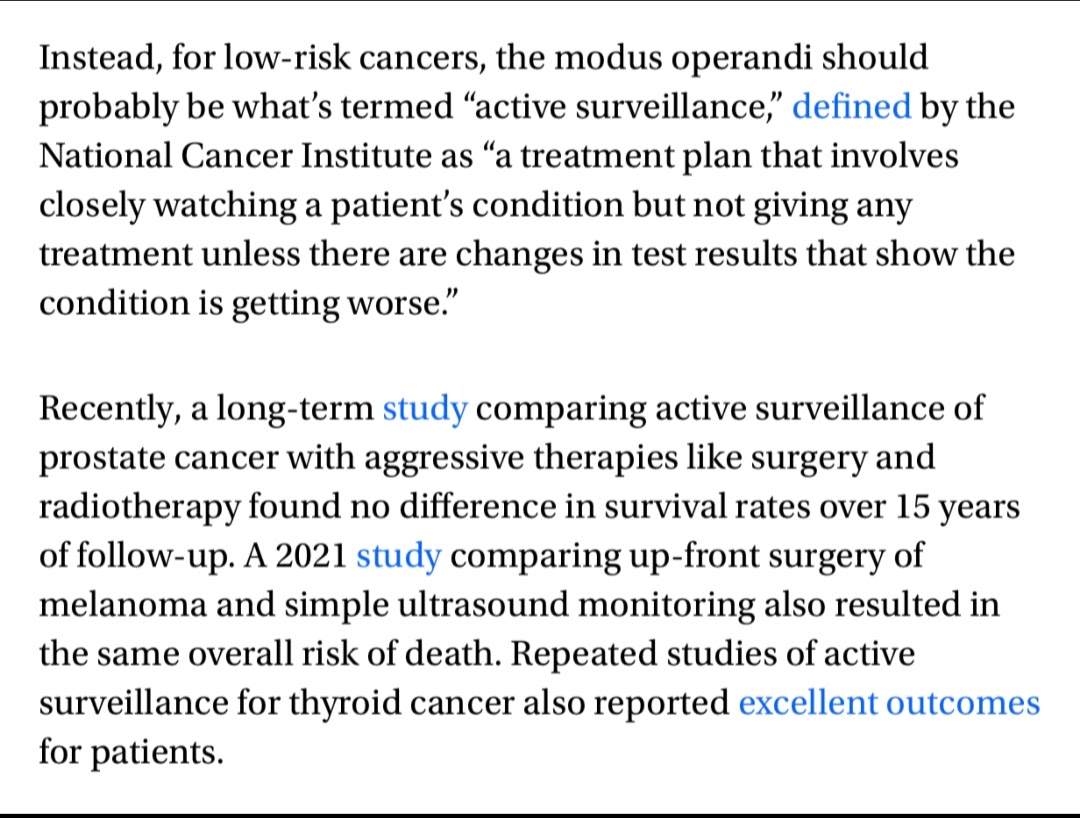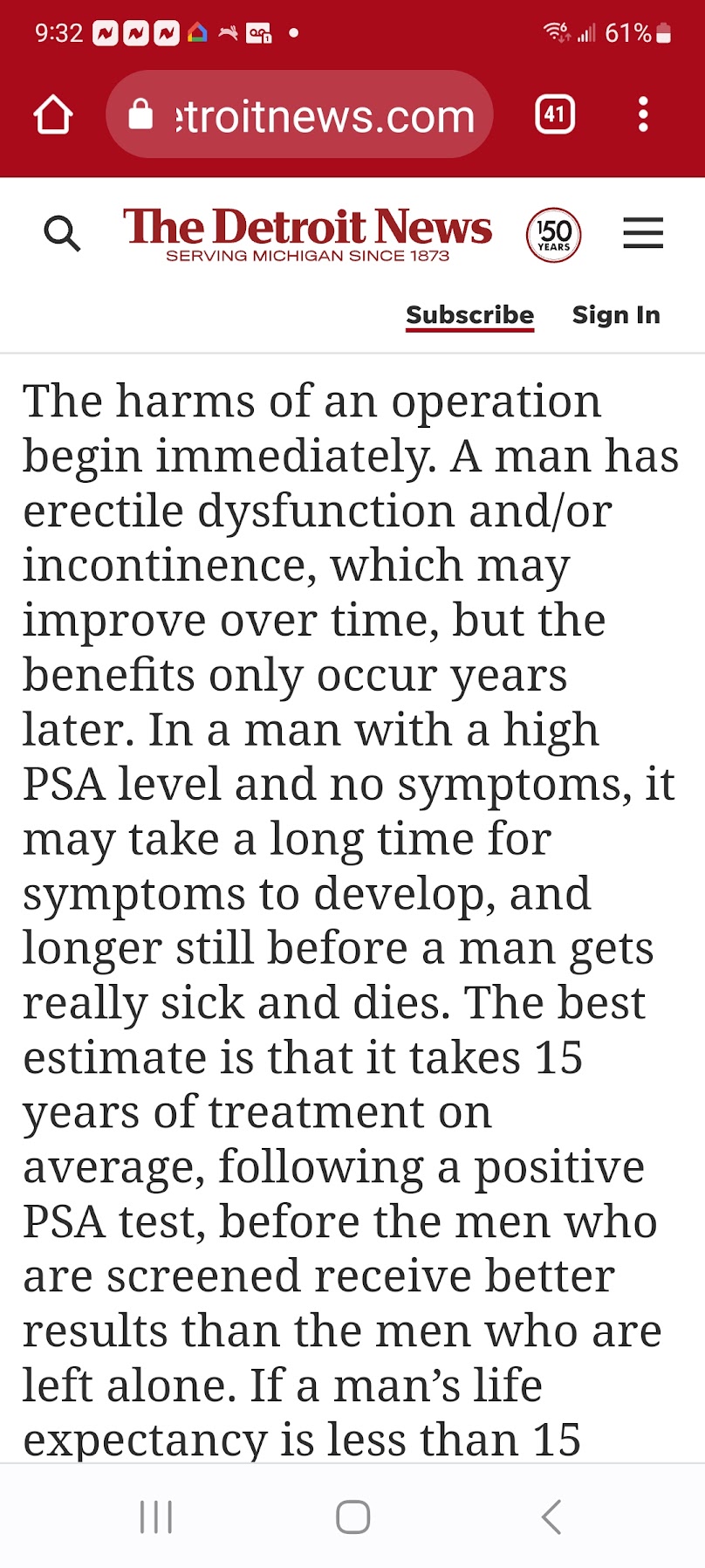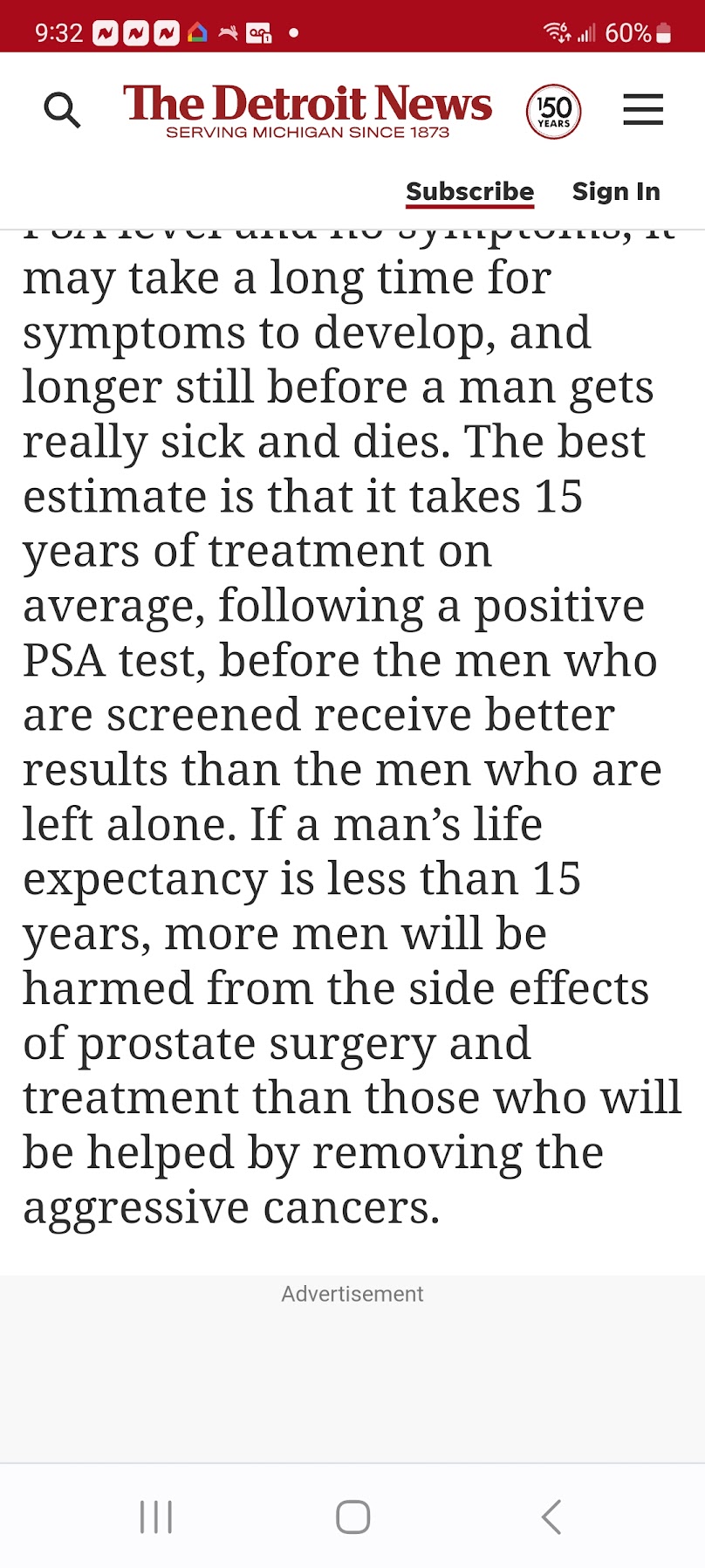The medical establishment is finally catching on to watch and wait for prostate cancer. BPH or cancer can create a high PSA number. 1 in 10 white men will be diagnosed with prostate cancer only a minority (less than 15%) of prostate cancer diagnoses lead to the death of a patient, or only 1.7% of white men will be diagnosed with prostate cancer each year with only .0026% to lead to death.

Dear G.K.: A PSA test is a simple and safe blood test, but the results may put a man onto a pathway that can lead to both benefit and harm, from which it is difficult to step off of.

The goal of PSA testing is to find not just any type of prostate cancer, but the kind that is destined to spread and ultimately causes death. Only a minority (less than 15%) of prostate cancer diagnoses lead to the death of a patient. This is largely because a majority of prostate cancer is “indolent” — very slow-growing.
For most men, the prostate cancer found during screening would never cause symptoms until he died of something else. The goal of prostate cancer screening is to identify and treat the aggressive prostate cancers, while not unnecessarily treating the slow-growing, indolent cancers.
Prostate cancer treatment in men found through screening is most often surgery. Despite advances in surgery, there are still risks. Mortality is uncommon, less than 0.5%, but 7% had a major complication during surgery. Nearly all men lose all, or part, of sexual function in the short-term, and over half of these men will continue to have erectile dysfunction a year after surgery. About 10% to 40% will lose some or full control of urination. Although the risks are lower with other treatments, such as radiation, a man’s quality of life is still at risk after prostate surgery.
Most men are willing to accept these risks if the surgery will prevent them from dying of prostate cancer, not when there isn’t any benefit. Consequently, the decision of who should get operated on becomes critical. We are much better at identifying men whose risks are so low that they can be watched by a combination of the biopsy results, the PSA level, perhaps a genetic test like the 4Kscore, and the size of the tumor (by a CT or MRI scan). When the cancer looks risky, we recommend operating. When it’s in a gray zone, most urologists and most men prefer proceeding with other treatments.
The harms of an operation begin immediately. A man has erectile dysfunction and/or incontinence, which may improve over time, but the benefits only occur years later. In a man with a high PSA level and no symptoms, it may take a long time for symptoms to develop, and longer still before a man gets really sick and dies. The best estimate is that it takes 15 years of treatment on average, following a positive PSA test, before the men who are screened receive better results than the men who are left alone. If a man’s life expectancy is less than 15 years, more men will be harmed from the side effects of prostate surgery and treatment than those who will be helped by removing the aggressive cancers.
The average life expectancy of a 75-year-old man is about 11 to 12 years, and cancers in older men tend to be more indolent, which is why 75 is a reasonable time to stop screening. There are still some men who will benefit from prostate cancer screening, even at age 75. However, more men tend to be harmed. Men need to understand this before getting this blood test.
Readers may email questions to ToYourGoodHealth@med.cornell.edu.
Even Harvard has stated that PSA testing for men over 70 is not required.




